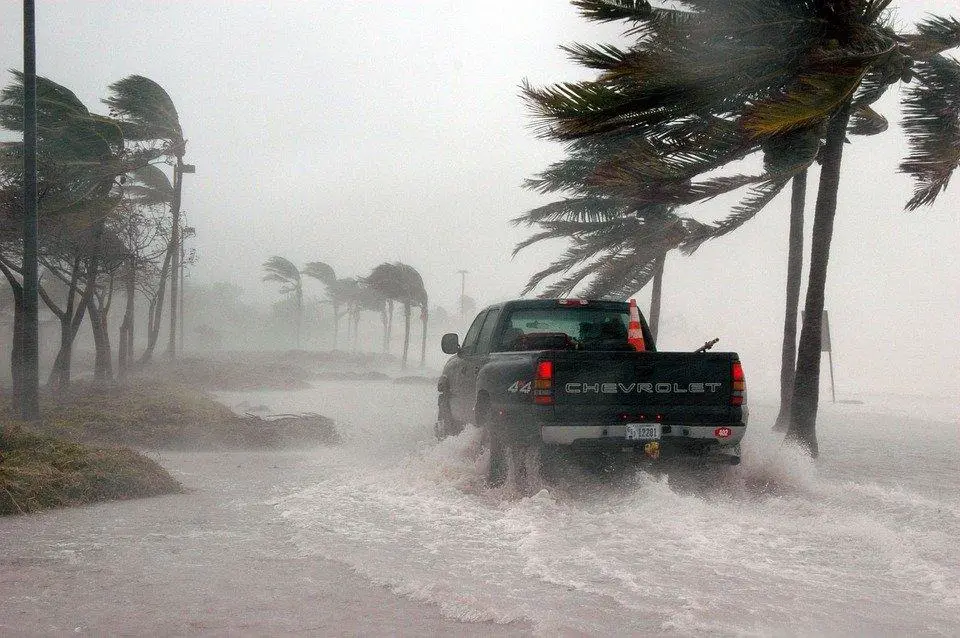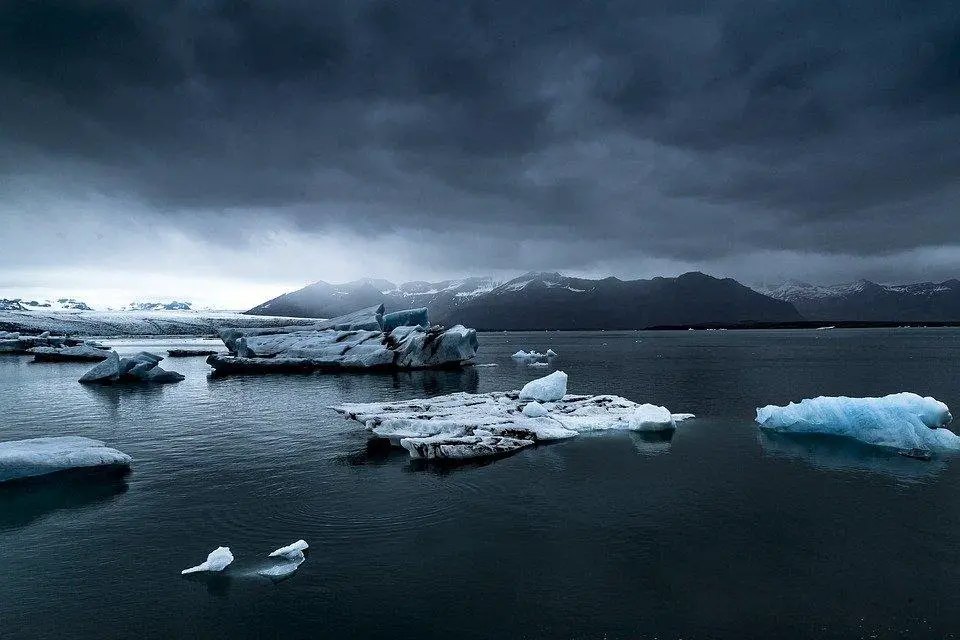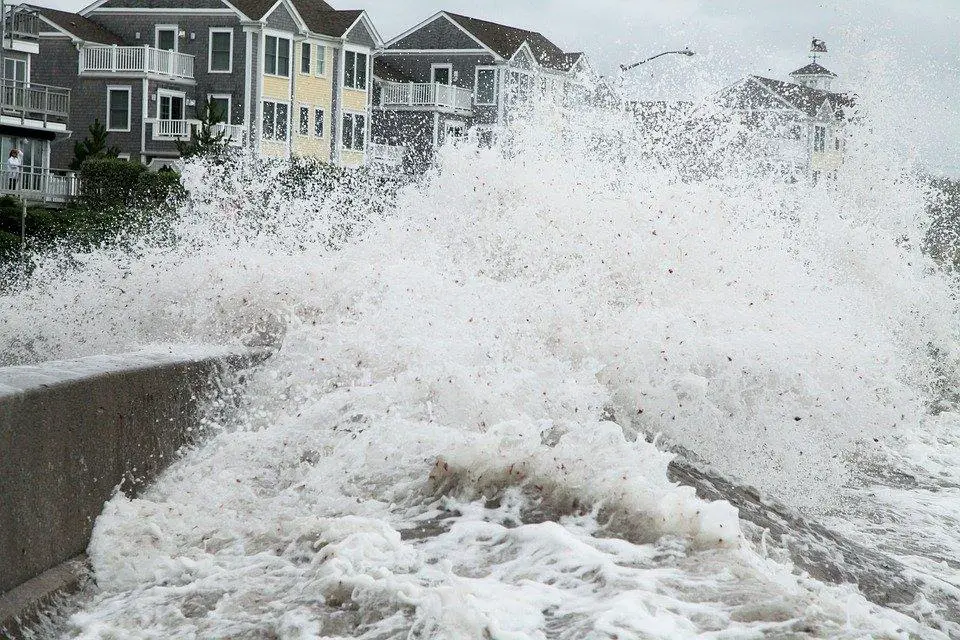
Why Is Sea-Level Rise A Problem?

Table of Contents
Introduction
Out of the 250 million people living by the coast globally, only less than 5 million are above sea level. Unfortunately, the global sea level has continued rising over the last century, and the rate has only increased in recent years. This rise in sea levels means that destructive storm surges will continue pushing further inland than ever before, resulting in frequent flooding.
In 2019, the global mean for the sea level rise was about 3.4 inches more than the 1993 average, marking the highest annual average in the 21st century. The sea is still rising at about an eighth of an inch every year, mostly because of seawater’s thermal expansion, melting glaciers, and several other factors. Here are the main causes of sea-level rise, it’s devastating effects, and what can counter the situation.

Destructive storm surges on the rise as the sea level continues rising. Pixabay
Causes of Sea-Level Rise
According to NASA, the sea level rise results in two main factors associated with global warming. That’s because human activities like coal and oil burning, greenhouse farming, and deforestation have increased the atmospheric concentration of gasses that trap air in the atmosphere. These gases have made the planet warmer by about 1.4-degrees Fahrenheit since 1880. As such, the two main causes of sea-level rise include:
Rising Global Temperatures
According to a 2019 Global Climate report released by the NOAA, the combined ocean and land temperature have increased at the rate of 0.13 degrees Fahrenheit per decade since 1880. However, the rate has continued accelerating since 1981, and experts predict that it might continue increasing in the coming decades.
As the global temperatures continue rising, the level will keep rising as the warming climate expands the seawater and causes ice to melt. This temperature rise is mostly due to the increased concentration of gasses that trap heat in the atmosphere, caused by human activities like coal burning and deforestation.
Melting Land Ice
Glaciers, ice sheets, and ice caps shrink at incredibly worrying rates in response to increasing global temperatures and bring more water to the oceans. With the acceleration of ice loss globally, its contribution to global sea-level rise has continued increasing, moving from about 50% from 1993-2008 to range at 75-80% from 2003 – 2007.

Melting glaciers and land ice adds more water to seas.
Negative Effects of Rising Sea Levels
While flooding is the obvious consequence of rising seawater levels, there are many other devastating effects to consider. There are the six most probable effects of rising sea levels.
Drinking-Water Contamination
As the rising seawater crawls further up the shore, it seeps into freshwater sources on the ground, especially in most coastal areas. These underground water sources known as aquifers are essential freshwater springs that provide drinking water.
Saltwater is unhealthy for drinking, and although there are ways to make it safe, it can be a complicated and expensive process. However, some jurisdictions are already investing in expensive desalination plants in preparation for the hard times ahead.
For instance, San Diego County has one of the biggest saltwater desalination plants in the US. The privately financed plant was developed by Poseidon Resources Corporation, featuring a pumping station, a desalination plant, and product water storage. Unfortunately, the cost of developing such a plant might be unrealistic to some coastal communities.
Interferes with Farming
The freshwater sources that we all depend on for drinking water are the same ones used for irrigation. That means when the intruding sea makes the groundwater saltier, crop growth is stunted. Salty water can also kill crops, and trying to create fresh water from ocean water is a costly and unreliable practice, especially with a limited budget.
Ironically, recent research suggests that pumping freshwater for human use from the ground might be a key contributor to the rising levels. After the groundwater is used for irrigation, drinking, or other industrial purposes, it’s often dumped in oceans, contributing to ocean water’s growing volume.
Changes Coastal Plant Life

Salty sea water kills plants and trees
As more saltwater hits our shores, it changes the soil’s chemistry, and that can also change plant life. Most plants are sensitive to their environments, and whether they can thrive in a certain location depends on several factors, including access to water, air temperature, and the soil’s chemical characteristics.
When the rising seawater seeps into the shoreline, the soil becomes saltier, and some plants are simply unable to cope with this change in the soil salinity. According to a Climate Central report, trees are the most affected by soil salinity. That’s because trees have to work harder to get water from the salty soil, and they die in the process. Even trees adapted to salty water have a hard time surviving repeated flooding by seawater.
Threatens Wildlife Populations
Many wildlife forms call the beach their home. Unfortunately, the rising sea levels erode the shoreline and flood areas where these coastal creatures like turtles and shorebirds live. The floods sweep away their delicate nests, which can be a major problem for endangered species like sea turtles. The seawater can also change the plant life surrounding their habitats, making the environment inhospitable for the animals to live in.
Hurts the Economy
The real-estate and tourism industries around the coastal areas will take a major hit as recreational areas, and beachfront properties get washed away. That’s a fact that some investors in these industries are having a hard time accepting.
North Carolina is an excellent example of how climate change can affect economic interests. According to a report released by a North Carolina scientist team several years ago, the sea level is expected to rise by three feet by the end of the century. That prompted the North Carolina government to pass a law banning coastal policy makers from making decisions for their communities based on the accelerated sea-level rise predictions.
Amplified Storm Surges
Coastal storms often result in storm surges, which happens when high winds push the water inland. With the rising sea levels, storm surges are amplified because of the elevated water level, and they can stretch further inland, potentially causing catastrophic damage to infrastructure and homes.

Storm surges threaten beach life
What Can Be Done?
When it comes to sea-level rise, there are three types of possible solutions. The coping solutions are the most widely regarded, which involves building seawalls and installing drainage systems. Island populations are also moving, as tourists strive to visit popular spots such as the Maldive before going underwater. Developers in Boston are trying to plan, and they’ve developed an elliptical tower that can survive wind storms. Unfortunately, such coping solutions fail to address the main cause of global warming.
Countries are also focusing on solutions that address the root issues by reducing greenhouse gas emissions to regulate the atmospheric temperature that causes the ocean water to swell. The solutions include wind energy, solar energy, and geothermal energy sources. Countries are also imposing carbon taxes to increase the cost of burning carbon and reward businesses that adhere to the set carbon caps.
The third solution is very critical, although it’s not widely discussed. That means cutting down the greenhouse gasses in the atmosphere. Fortunately, carbon sequestration works well in capturing and storing CO2 underground. According to the Paris Agreement goal, the authorities must strive to remove at least 10 billion tons of CO2 from the air by 2050. However, only 60 million tons of CO2 were sequestered in 2018.
Planting trees and other vegetation to reduce deforestation is the easiest solution to eliminate CO2 in the air. Research shows that the world’s 3 trillion trees can hold 400 gigatons of carbon, and there’s still empty land that can hold up to 1.2 trillion more trees. This conservancy method is affordable as it would only cost about $10 per CO2 ton absorbed. Planting trees also prevents flooding, and that’s why the state of California has taken up their initiative.
How You Can Help Reverse The Sea-Level Rise
There are several ways you can help in reversing sea level rise today, including:
-
Plant trees and other vegetation to absorb atmospheric CO2. You can also donate trees to charities that plant them in a bid to halt deforestation. For instance, 100 mangrove trees are equipped to absorb 2.18 metric tons of carbon dioxide annually.
-
Become carbon neutral. That has a major impact on the atmospheric carbon levels, as the average American releases about 16 tons of CO2 to the atmosphere every year.
-
Enjoy plant-based diets that have less meat as cows create the greenhouse gas, methane. Farming crops to feed these animals also cause deforestation.
-
Avoid using palm oil products since it encourages the clearing of carbon-rich swamps and tropical forests to plant its trees.
-
Reduce food waste. Research shows that 26.2 gigatons of CO2 can be avoided by cutting down food waste by 50%.
-
Reduce the use of fossil-fuel where possible by using electric vehicles, biking, and mass transit.
-
Hold corporations and governments accountable to act on climate-related risks.
Bottom Line
With continued atmospheric warming and the emission of greenhouse gasses, global sea levels are likely to continue rising at higher rates than in the current decade. That will mainly affect the coastal population as sea-level rise plays a crucial role in shoreline erosion, flooding, and storm hazards. However, the rate of sea-level rise in specific locations might be less or more than the global rate because of many local factors like erosion and upstream flood control.